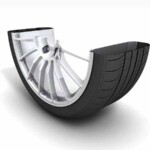
Is a Partial Repair Ever “Good Enough?” Part 2
Published in AASP-MN News – Thomas Greco Publishing
Collision industry leaders consistently emphasize the importance of performing a “complete and proper repair” in accordance with OEM recommendations in order to restore a vehicle to its pre-accident condition, but – for a variety of reasons – shops may not be performing every single task. Are all those repairs necessary? If the vehicle is still “driveable” without addressing those issues, is it “good enough”…or should shops be refusing these partial repairs?
Last month, AASP-MN News explored this subject with experts on the mechanical side of the industry (available at grecopublishing.com/aasp0824coverstory). Now, the conversation continues with two leading collision consultants: Mike Anderson (Collision Advice) and David Luehr (Elite Body Shop Solutions).
So, why do some shops perform partial repairs? It often boils down to a failure to adequately diagnose the problem(s), a lack of qualified help, or payment issues.
“Shops that are not equipped to diagnose all the necessary repairs need to take a step back and implement a systematic approach to incorporating OEM repair procedures into their repair plans to avoid releasing an improperly repaired – and potentially unsafe – vehicle to a customer,” Luehr recommends. “Likewise, technicians should not be working on vehicles that they have not been properly trained to repair. It all begins with performing a pre-scan on the car to ensure you’re diagnosing all the necessary repairs and writing a thorough repair plan.”
Payment is another major barrier to complete repairs in some shops, whether those concerns stem from a customer or the insurer. “Typically, I hear about this situation when a customer is paying out of pocket; they simply cannot afford all the repairs and want to do the bare minimum to get their car running safely again,” Anderson indicates. “Customers may also ask for temporary repairs to get them through when a shop has a backlog. There are definitely valid reasons to perform ‘partial’ repairs, and it’s pretty common for shops to offer this courtesy when it’s safe to do so – and it’s probably a really good idea from a customer service standpoint.”
Sometimes, shops struggle with collecting compensation from a third-party payer. “It’s the classic ‘You’re the only one who charges for that’ with the insurance carrier,” Luehr contributes. “But sometimes, a customer cashes their insurer’s check and decides they don’t want to pay $1,000 to replace a headlight because of a tiny scratch. It’s their car, so unless it impacts the vehicle’s safety or unless the shop has an agreement with the insurer to replace it, it is ultimately the customer’s decision on whether they want a cosmetic task performed.”
Unaddressed maintenance issues can occasionally create additional headaches for collision shops because those items are often required to complete other elements of the repair but not covered by insurance since they are unrelated to the loss event. “Perhaps you do an alignment, but the tires are worn, so it won’t drive straight no matter what you do. Or during a pre-scan, you find diagnostic trouble codes that are unrelated to the accident,” Anderson provides examples. “There are lots of ways that unaddressed maintenance items could create problems, which is why it’s so important for shops to have upfront conversations with their customers about the potential need to pay out of pocket for certain items.”
Engaging in open dialogue with one’s customers is vital for a number of reasons. “We absolutely have an obligation to educate the customer if there’s a safety concern,” Anderson stresses, pointing out that today’s complex vehicles often contain many interrelated components. “We should listen to what our customers want, but we are the experts, so we are responsible for determining if acquiescing to that request could impact the functionality of any safety features or ADAS that consumers may be relying on.”
“Today’s technology drastically changes how we approach repairs,” Luehr agrees. As an example, he noted that a shop could easily spot in the corner on a 1993 Buick with a bumper scratch, but with modern vehicles, there’s more to the simplest repair than what meets the eye. “If we have the same scratched bumper on a 2023 Buick, we now have blindspot monitors and all sorts of equipment under the bumper, so we’re talking about a completely different kind of repair. We are responsible for understanding that car and everything it’s equipped with so that we can properly assess and repair the damage on newer vehicles.”
Still, there are some repairs that are strictly cosmetic, such as touching up a scratch on a quarter panel where no ADAS is hidden beneath the surface. “Perhaps, the customer just needs their work truck to be safe and functional and doesn’t care what it looks like,” Anderson suggests. “Every situation is different, and each vehicle has to be looked at based on its own merit.”
Another example may be opting not to clearcoat the entire bumper when performing a spot repair, according to Luehr. “Is it the right thing to do? Well, the paint could possibly fail, but it is not unsafe. If a customer wants to drive a car with a mismatched door because they don’t want to pay for the paint job, it has no impact on the vehicle’s safety. It essentially becomes a business decision that each shop owner must make for himself or herself with the customers’ input, as long as they are meeting the criteria of a safe repair.”
Anderson offers another angle to these considerations while continuing to emphasize that safety is paramount. “We have to consider whether a repair item is safety-impacting or strictly cosmetic, while keeping the customer’s best interests in mind. Sometimes, that includes considering their financial needs. With insurance premiums increasing 20-30 percent last year, many consumers are reluctant to file a claim, so they’re opting to pay out of pocket instead. Our industry does not exist in a vacuum; the current state of the economy significantly impacts some of the decisions we may need to make, and it’s important to be open to what our customers need most.”
While Luehr concurs that it’s worth being “open-minded about cosmetic repairs,” he reiterates that it all comes back to safety. “As an industry, we always need to be performing the highest quality repairs, and that means asking, ‘Am I jeopardizing the safety of people in this car by doing this repair this way?’ If not, we can explore it. But if our actions could create a potential safety concern, we must refuse that request and clearly communicate our reasons with the customer. Safety first!”
“Safety comes first,” Anderson echoes. “Shops need to protect themselves from possible liability concerns, but first and foremost, our responsibility is to our customers who entrust us to make sure the vehicle they drive will safely transport them and their families. They may not always understand why we can’t do the partial repairs they ask us to perform, so we need to be prepared to explain the safety implications so that we can protect them from themselves when necessary!”




